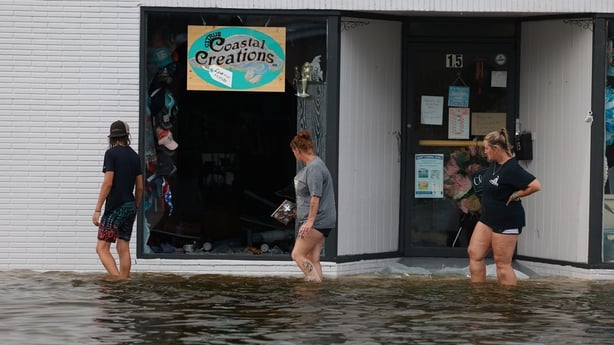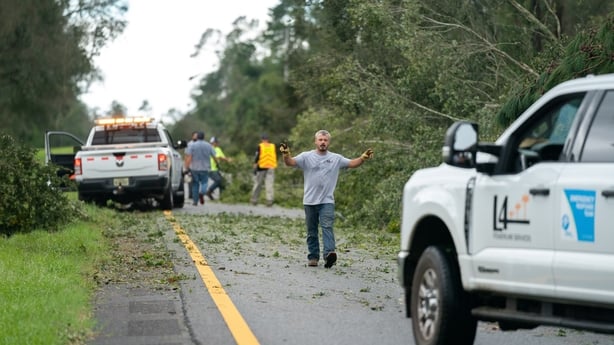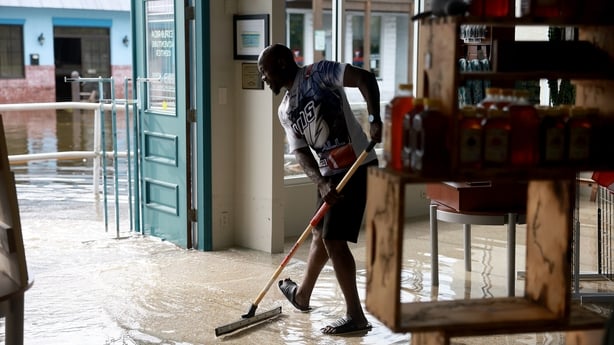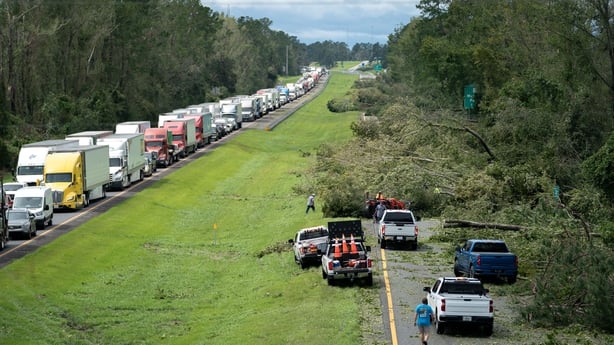Tropical Storm Idalia inundated the Carolinas with torrential rains that threatened to trigger dangerous flash flooding, while Florida's Gulf Coast began recovery efforts after the system tore through the region as a Category 3 hurricane.
The backend of the storm was producing heavy downpours that could amount to 23cm in some spots along the region's coastline, the National Weather Service said.
The service warned of possible life-threatening flash flooding, especially in low-lying areas and along rivers, through the morning and into the afternoon.
Storm surge warnings were also in effect for several oceanfront communities with ongoing warnings of heavy rains and fierce winds.

Idalia struck as an "extremely dangerous" Category 3 hurricane in Florida's marshy, sparsely populated Big Bend area yesterday, the US National Hurricane Center (NHC) reported.
The storm made landfall packing maximum sustained winds of approximately 215km/h near the community of Keaton Beach, with a possible storm surge of up to 5m in some coastal areas.
Though Idalia weakened to a Category 1 hurricane and eventually a tropical storm, it remained dangerous as it moved over Georgia and into South Carolina.
US President Joe Biden is to visit Florida on Saturday, the White House said.

Read more: How climate change boosts hurricanes
As of Thursday morning, the storm was about 105km southwest of Wilmington, North Carolina, carrying winds of 100kp/h as it drifted northeast. Idalia is expected to curl eastward and out into the Atlantic tonight.
The rough conditions in the Carolinas come a day after Idalia crashed ashore at Keaton Beach in Florida's Big Bend region, lashing the coast with sustained winds of up to 201kp/h, torrential rains and pounding surf.
Local, state and federal authorities will assess the full extent of damage in the days ahead. Insured property losses in Florida were projected to run well over €8 billion, investment bank UBS said in a research note.

While coastal communities sustained major damage, Idalia appeared to have been far less destructive than Hurricane Ian, a Category 5 storm that struck Florida last September, killing 150 people and causing more than €103bn in damage.
"The community is resilient and we are going to work hard to make sure people get what they need," Governor Ron DeSantis said during a news briefing.
Florida has requested a major disaster declaration from the federal government for all 25 counties that fell under the hurricane warning, he said.
FEMA Administrator Deanne Criswell said during the news briefing that she would tour the area with Mr DeSantis to assess the damage, and that the governor and President Joe Biden have remained in close contact.

The surge of storm-driven seawater that accompanied Idalia rushed inland for miles, flooding low-lying communities and roadways in its path. No deaths had been reported from the storm surge, considered the greatest hazard posed by major hurricanes.
Florida Highway Patrol reported that two motorists had died in separate rain-related crashes early Wednesday before Idalia made landfall. DeSantis later said state authorities were investigating one unconfirmed storm-related traffic death.
In Taylor and Hernando counties, National Guard troops pulled stranded motorists to safety on Wednesday, while emergency teams plying submerged streets in boats rescued dozens of people from floodwaters in St. Petersburg, about 200 miles south of landfall.
Boat rescues also took place in at least one town in the neighboring state of Georgia, which a weakened Idalia strafed as it pushed northward out of Florida.

